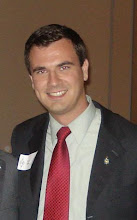 Before she struck up her orchestra on their last piece of the season in the Strathmore Music Center, Marin Alsop made a little joke. “We thought we would end with something small” and then there was laughter from the audience. Anyone who had looked at the program and knew the basics of western musical history would pick up on the verbal irony of that line. The final piece was by Wagner, and nothing about Wagner is small. And of all things, this was an arrangement of highlights from The Ring of the Nibelungen – the Texas of musical pieces.
Before she struck up her orchestra on their last piece of the season in the Strathmore Music Center, Marin Alsop made a little joke. “We thought we would end with something small” and then there was laughter from the audience. Anyone who had looked at the program and knew the basics of western musical history would pick up on the verbal irony of that line. The final piece was by Wagner, and nothing about Wagner is small. And of all things, this was an arrangement of highlights from The Ring of the Nibelungen – the Texas of musical pieces.As I started listening to the piece I began thinking to myself “What is it about Wagner?” Countless people call him their favorite composer (There is a Wagner Appreciation Society in DC, FYI), and others will walk out of a concert that is featuring his music
 (I’ve actually heard of this happening). From everything I’ve heard he was an absolutely vile person – extremely anti-Semitic, he was obsessed with his own legacy and success, and unmercifully critical of pretty much anyone who didn’t see things his way. Ludwig II, Bavaria’s mad king, bankrupted his state to build an entire castle in Wagner’s honor. Wagner was unquestionably Hitler’s musical inspiration, and his music provided a soundtrack to the construction of his nefarious Third Reich. Love him or hate him, we just can’t get over this guy.
(I’ve actually heard of this happening). From everything I’ve heard he was an absolutely vile person – extremely anti-Semitic, he was obsessed with his own legacy and success, and unmercifully critical of pretty much anyone who didn’t see things his way. Ludwig II, Bavaria’s mad king, bankrupted his state to build an entire castle in Wagner’s honor. Wagner was unquestionably Hitler’s musical inspiration, and his music provided a soundtrack to the construction of his nefarious Third Reich. Love him or hate him, we just can’t get over this guy.Maybe it’s because the music is just so big. Wagner wrote for massive orchestras and created walls of sound. He was one of the first composers to use tubas regularly, and went as far as creating his own instruments when he couldn’t find preexisting ones to get the sound he wanted. His operas were also incredibly long (Die Meistersinger is almost 5 hours long). It’s largely due to Wagner that opera is stereotyped as long and overly dramatic. Whenever you see a spoof of opera featuring an over-weight couple with braided hair and Viking horns singing at the top of their lungs, that’s Wagner. (Specifically, it’s The Ring of the Nibelungen). When you add all this to the huge, iconoclastic character of the composer, you have a result that is going to stick with people.
Maybe it’s because he was so technically good. Wagner is famous for popularizing the music concept of the leitmotif – a recurring musical theme that is attached to a character or thing. This was a huge breakthrough at the time, although it’s second nature today. Think of how much Star Wars would lose if you didn’t hear that dark, brassy march every time Darth Vader walked across the screen, or how much less powerful Lord of the Rings would be if you didn’t get those triumphant chords every time the hobbits made progress towards finding the ring. (As a side note, read the synopsis to The Ring of the Nibelungen… notice anything?) Pretty much any movie that’s worth its salt uses leitmotivs. These themes embedded in the music are one of the reasons that Wagner’s music works with his operas so well. The music seems to elicit visual images. Francis Ford Coppola knew how to use this to his advantage.
Finally, all of this comes together to create an almost outrageous sense of drama. (Case in point is tonight’s piece – Wagner needed a grand way to finish the series of four operas that formed The Ring of the Nibelungen, so at the end of the score you will find stage directions instructing you to light the opera house on fire. I’m not kidding). More than a composer, Wagner saw himself as a storyteller. He was acutely proud of his Germanic homeland, and used the very best
 of Central and Northern European folk tales to create the plots of his operas. In Wagner’s work you will find a huge helping of the most resounding themes of humanity; good and evil, love and hate, power and weakness, forgiveness, betrayal, loneliness, insanity, the longing for immortality. As humans, we just can’t get enough of this stuff - it’s just so big and so good. It strikes chords with our deepest emotions.
of Central and Northern European folk tales to create the plots of his operas. In Wagner’s work you will find a huge helping of the most resounding themes of humanity; good and evil, love and hate, power and weakness, forgiveness, betrayal, loneliness, insanity, the longing for immortality. As humans, we just can’t get enough of this stuff - it’s just so big and so good. It strikes chords with our deepest emotions.We’re going to be talking about Wagner for a long time to come.

